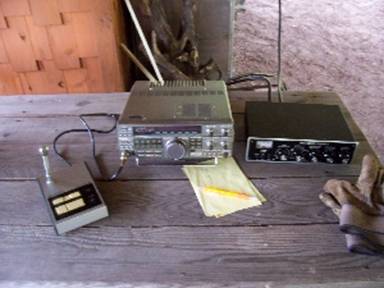
Kenwood TS-440S, MFJ 941D tuner
*Simple HF Ham Radio*
As you may have heard, the FCC has entirely dropped the Morse Code requirement from Amateur Radio. Getting in to the world of radio is even easier now.
There have been several Rubies who have gained their Technician class licenses over the last few months and many are moving on to General and Extra! That’s great. The Rubicon has a great “backbone” HF system up and running. Rubies with HF licenses and the proper gear can send email and even pictures back and forth w/o relying on the internet or ANY other type of infrastructure. Rubies can be ANYWHERE and still communicate. There are several articles in the Rubicon that show how it works.
I took a simple HF (high frequency) station to the 2007 Rubicon International Campout “IC”. Here it is.

Kenwood TS-440S, MFJ 941D tuner
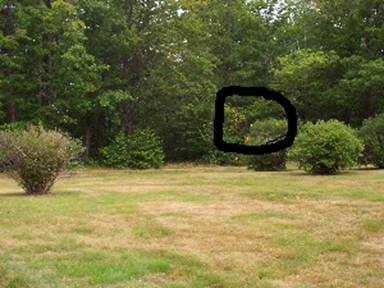
Center of the dipole antenna is the white speck in the circle
The radio covers all ham bands between 10-meters (28MHz) all the way down to 160-meters (1.8 MHz) with 100 watts of power. The dipole antenna tunes up on 10 through 80 meters, but not well on 160 meters because it’s not long enough.
From the IC site in Eastern Pennsylvania, I checked in to Maritime Mobile net on 20-meters. I also checked in to the nightly traffic/emergency net in my home state some 600 miles away. We were camping in a place with horrible cellular phone service, but ham radio worked. My antenna was about 10’ above the ground.
Here’s what a simple voice set up looks like-
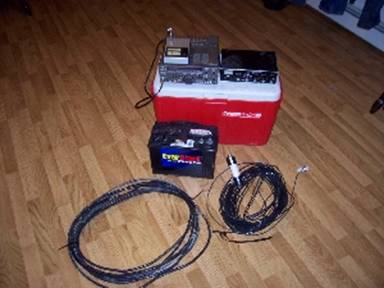
I can set this up ANYWHERE and talk to the world
This is the same set up I used at the IC.
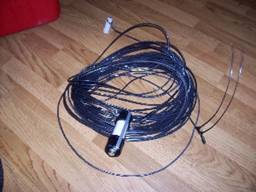
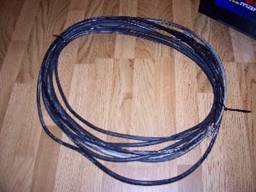
Antenna-------------------------------Transmission line
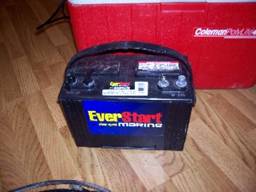
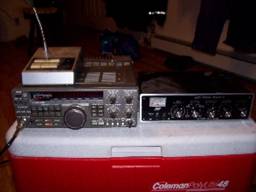
12-volt battery (Deep Cycle)---------------------HF radio and tuner
A “tuner” is coupled between the radio and the antenna. In layman terms it “lies” to the radio to make it think that the antenna is longer or shorter than it actually is. The tuner is what makes it possible to use one antenna such as this multi-band dipole on most or all of the HF bands.
The antenna is about 100’ long and was strung between a building and some trees.
There are many different types of HF radios and antennas available. What you get is up to you. Used equipment can be found at ham fests or you can buy new gear through dealers. You can spend anything from a few hundred bucks to several thousand. It’s all up to you.
Jaden
www.alpharubicon.com
All materials at this site not otherwise credited are Copyright © 1996 - 2007 Trip Williams. All rights reserved. May be reproduced for personal use only. Use of any material contained herein is subject to stated terms or written permission.